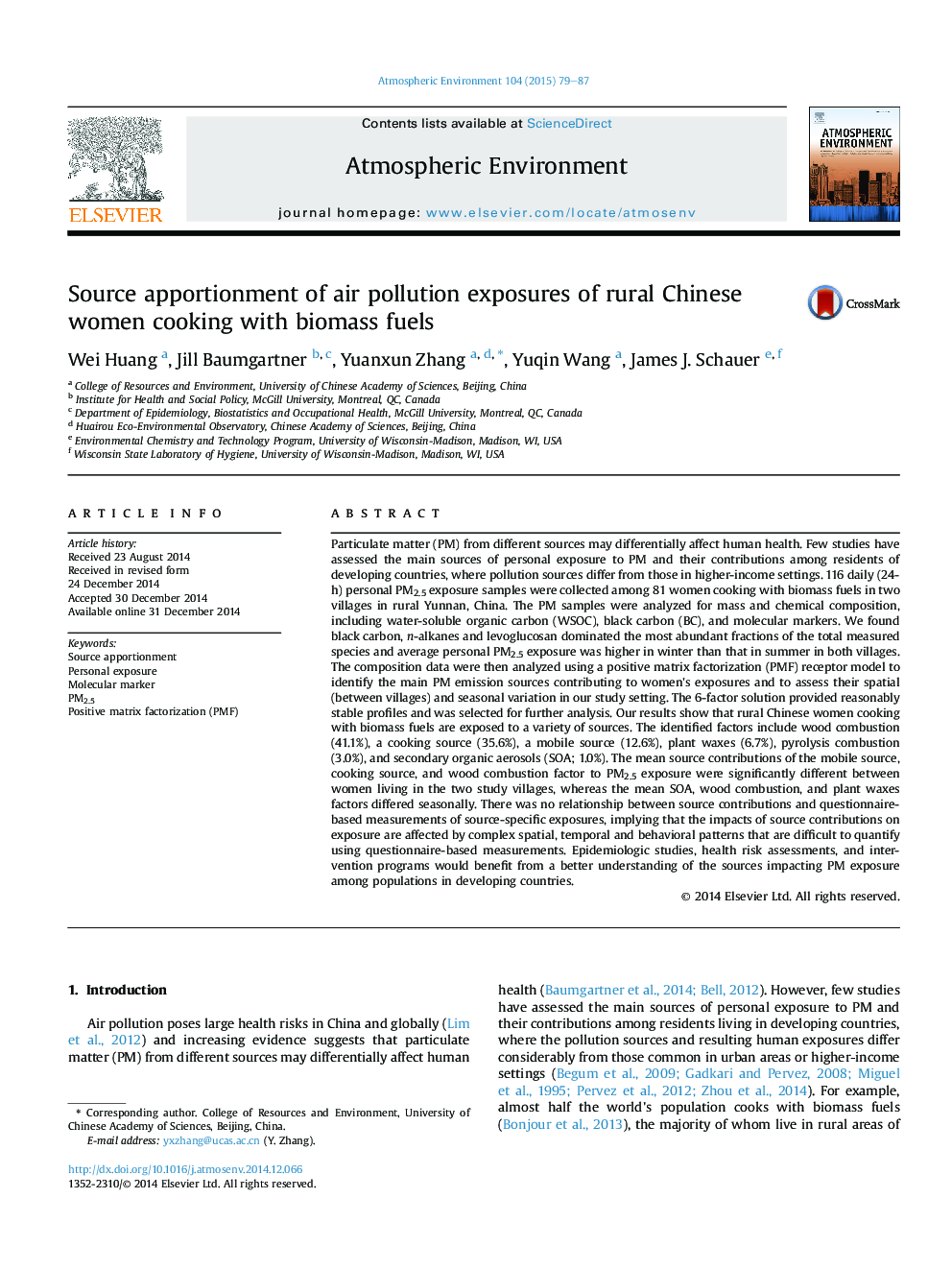| کد مقاله | کد نشریه | سال انتشار | مقاله انگلیسی | نسخه تمام متن |
|---|---|---|---|---|
| 6338774 | 1620367 | 2015 | 9 صفحه PDF | دانلود رایگان |
عنوان انگلیسی مقاله ISI
Source apportionment of air pollution exposures of rural Chinese women cooking with biomass fuels
ترجمه فارسی عنوان
تقسیم منابع آلودگی هوا زنان پخت و پز زنان روستایی با سوخت زیست توده
دانلود مقاله + سفارش ترجمه
دانلود مقاله ISI انگلیسی
رایگان برای ایرانیان
کلمات کلیدی
موضوعات مرتبط
مهندسی و علوم پایه
علوم زمین و سیارات
علم هواشناسی
چکیده انگلیسی
Particulate matter (PM) from different sources may differentially affect human health. Few studies have assessed the main sources of personal exposure to PM and their contributions among residents of developing countries, where pollution sources differ from those in higher-income settings. 116 daily (24-h) personal PM2.5 exposure samples were collected among 81 women cooking with biomass fuels in two villages in rural Yunnan, China. The PM samples were analyzed for mass and chemical composition, including water-soluble organic carbon (WSOC), black carbon (BC), and molecular markers. We found black carbon, n-alkanes and levoglucosan dominated the most abundant fractions of the total measured species and average personal PM2.5 exposure was higher in winter than that in summer in both villages. The composition data were then analyzed using a positive matrix factorization (PMF) receptor model to identify the main PM emission sources contributing to women's exposures and to assess their spatial (between villages) and seasonal variation in our study setting. The 6-factor solution provided reasonably stable profiles and was selected for further analysis. Our results show that rural Chinese women cooking with biomass fuels are exposed to a variety of sources. The identified factors include wood combustion (41.1%), a cooking source (35.6%), a mobile source (12.6%), plant waxes (6.7%), pyrolysis combustion (3.0%), and secondary organic aerosols (SOA; 1.0%). The mean source contributions of the mobile source, cooking source, and wood combustion factor to PM2.5 exposure were significantly different between women living in the two study villages, whereas the mean SOA, wood combustion, and plant waxes factors differed seasonally. There was no relationship between source contributions and questionnaire-based measurements of source-specific exposures, implying that the impacts of source contributions on exposure are affected by complex spatial, temporal and behavioral patterns that are difficult to quantify using questionnaire-based measurements. Epidemiologic studies, health risk assessments, and intervention programs would benefit from a better understanding of the sources impacting PM exposure among populations in developing countries.
ناشر
Database: Elsevier - ScienceDirect (ساینس دایرکت)
Journal: Atmospheric Environment - Volume 104, March 2015, Pages 79-87
Journal: Atmospheric Environment - Volume 104, March 2015, Pages 79-87
نویسندگان
Wei Huang, Jill Baumgartner, Yuanxun Zhang, Yuqin Wang, James J. Schauer,
